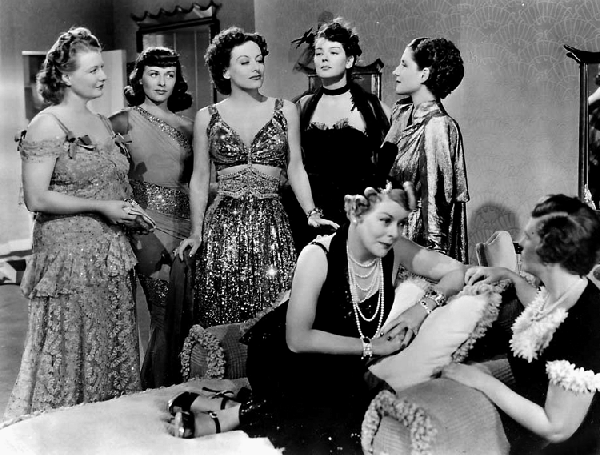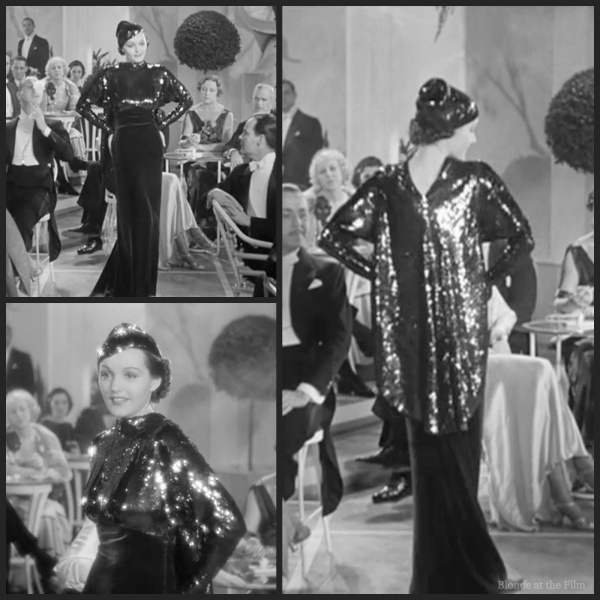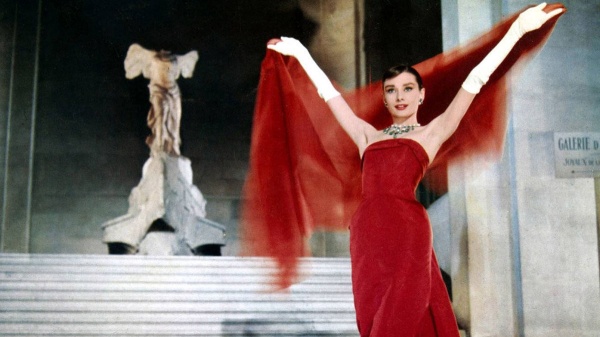FASHION IN FILM
Posted by Deirdre | Filed under Blog

In The Devil Wears Prada (2006), the put-upon heroine, ingénue Andy Sachs (Anne Hathaway), is the brainy, would-be serious journalist who at first disdains the fashion world she is dropped into as assistant to tyrannical boss, Miranda Priestly (Meryl Streep). But she spins around — so to speak — draping herself in finery, and thus she genuinely undergoes a sea-change of self — uncovering that repressed side of her that says it’s okay to love beautiful clothes. That’s real.
But in the movies that admission has been a long time coming, well, back in style. The coffers of Old Hollywood are stuffed with twinkling gems of films in which fashion figures prominently and gracefully, delivering on “the audience’s need to see things they could never have and to experience feelings absent from their daily lives,” to quote from film scholar Jeanine Basinger’s A Woman’s View, How Hollywood Spoke to Women, 1930-1960. It was all part of the illusion of living the beautiful life, as this brief survey illustrates:

The Women (1939)
Fashion shows were integral to old Hollywood films. If audiences couldn’t go to Paris to see the latest looks, they could at least go to movies like this one in which a black-and-white picture suddenly opens itself to a runway show, in garish Technicolor, featuring the often outlandish creations of the uni-named Hollywood designer, Adrian. The hats look like mutant insects crawling along the side of a model’s head and some of the gowns worn by Joan Fontaine, Norma Shearer and Rosalind Russell have a Byzantine feel to them — big shoulders and even bigger swaths of gold. This was power dressing in the extreme.

Roberta (1935)
Irene Dunne stars in this Jerome Kern musical bursting with furs and gowns cut on the bias — a fun-filled fashion frolic that takes a football player (Randolph Scott) from Indiana to Paris when he inherits his dead aunt’s dressmaking company in the world’s fashion capital. There’s a grand finale fashion show, with Art Deco overtones, and with a young (and blonde) Lucille Ball as one of the models. The film proved so popular that it was remade in 1952 as Lovely to Look At, starring Kathryn Grayson, Howard Keel, Red Skelton, Ann Miller and Zsa Zsa Gabor.

Cover Girl (1944)
Another musical, this time starring Gene Kelly, Phil Silvers and Rita Hayworth as the hoofer with a heart of gold who wins the contest to become Vanity magazine’s Golden Wedding Girl. Hollywood glamour is paid unstinting homage: long talons, pin-curl hair, Betty Grable-esque legs in seamed stockings, red lips and outfits, outfits, outfits. All this glamorous energy reaches the boiling point during the “Girl on the Magazine Cover” musical number during which several celebrated cover girls in a fashion pageant pose for a camera lens that captures them as they were seen in the 1940s, on the covers of Redbook, Glamour, Coronet, Liberty, Bazaar, Vogue and others. Fashion in a time capsule.

Funny Face (1957)
Audrey Hepburn is a dowdy intellectual working in a Greenwich Village book store when she is discovered by Fred Astaire’s dapper fashion photographer (modeled after the film’s fashion consultant, renowned lens man Richard Avedon) and his boss, high-fashion magazine editor Kay Thompson whose declaration, “think pink,” pays homage to the verbal extravagance of actual Vogue editor, Diana Vreeland. As in The Devil Wears Prada, the heroine is, at first, dismissive of the fashion whirlwind. But it doesn’t take long for her to fall under fashion’s spell. Of course, in real life, Hepburn was a true style icon, thanks in large part to her life-long relationship with fashion designer Hubert de Givenchy, who happened to dress her for this film.
